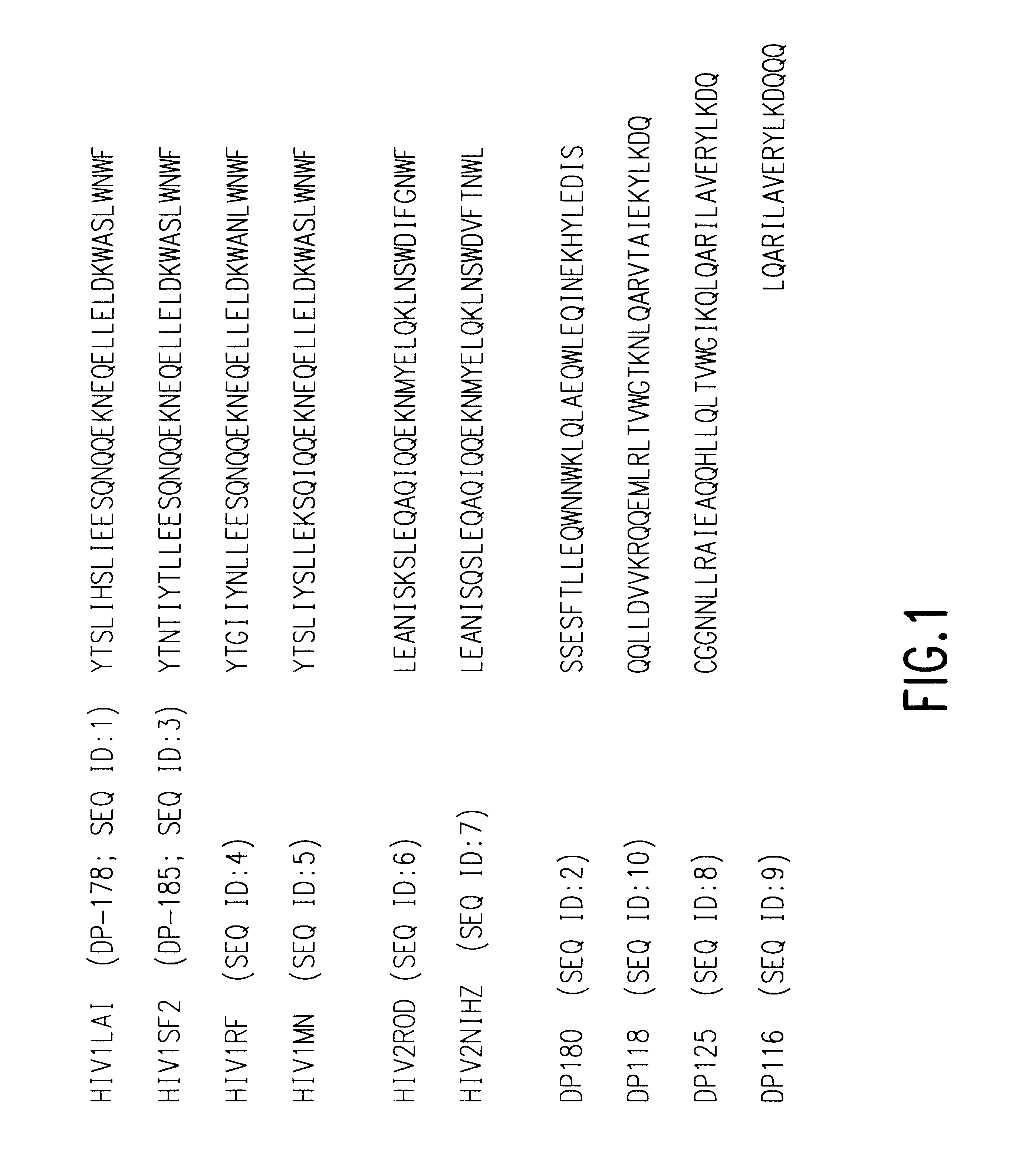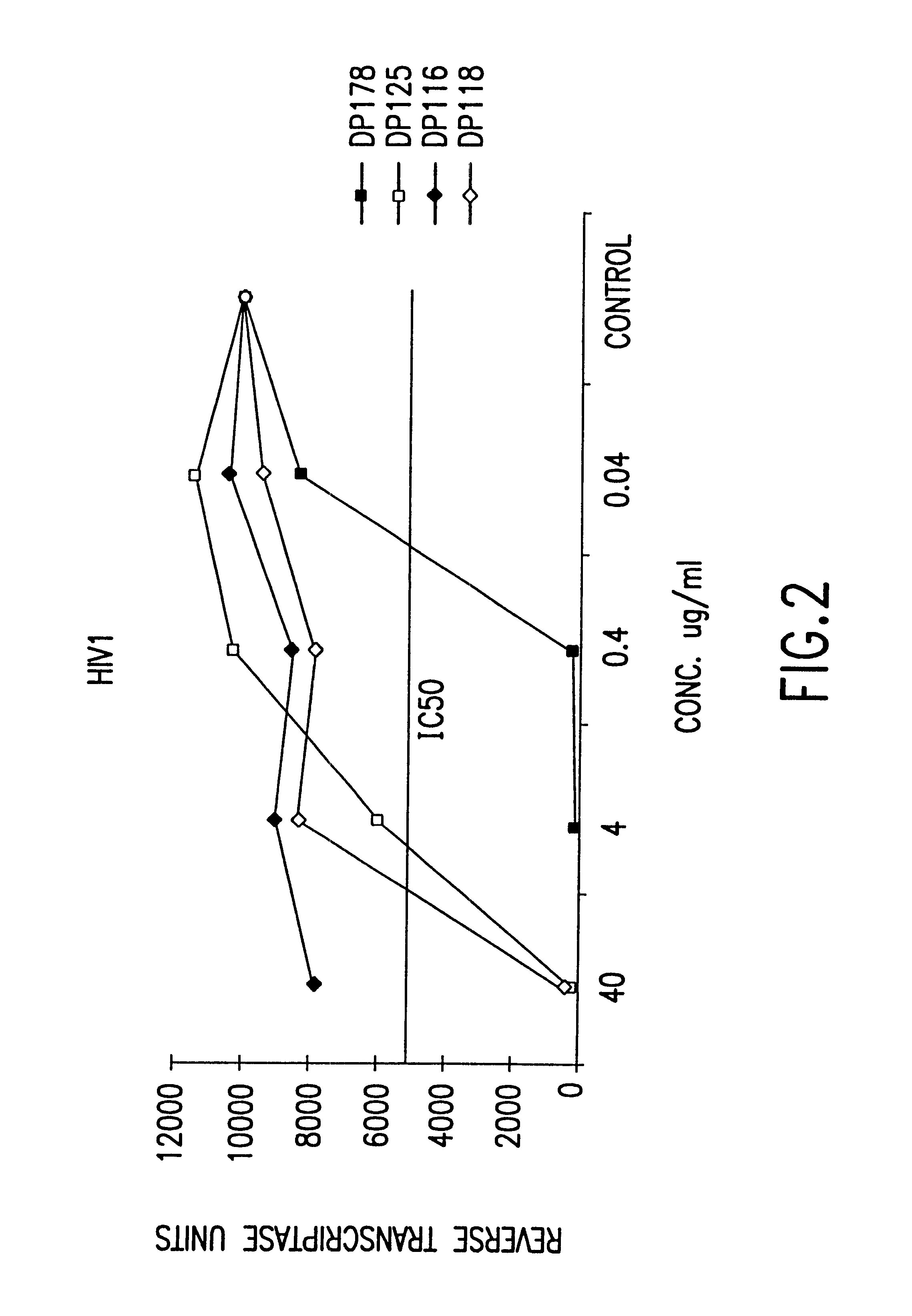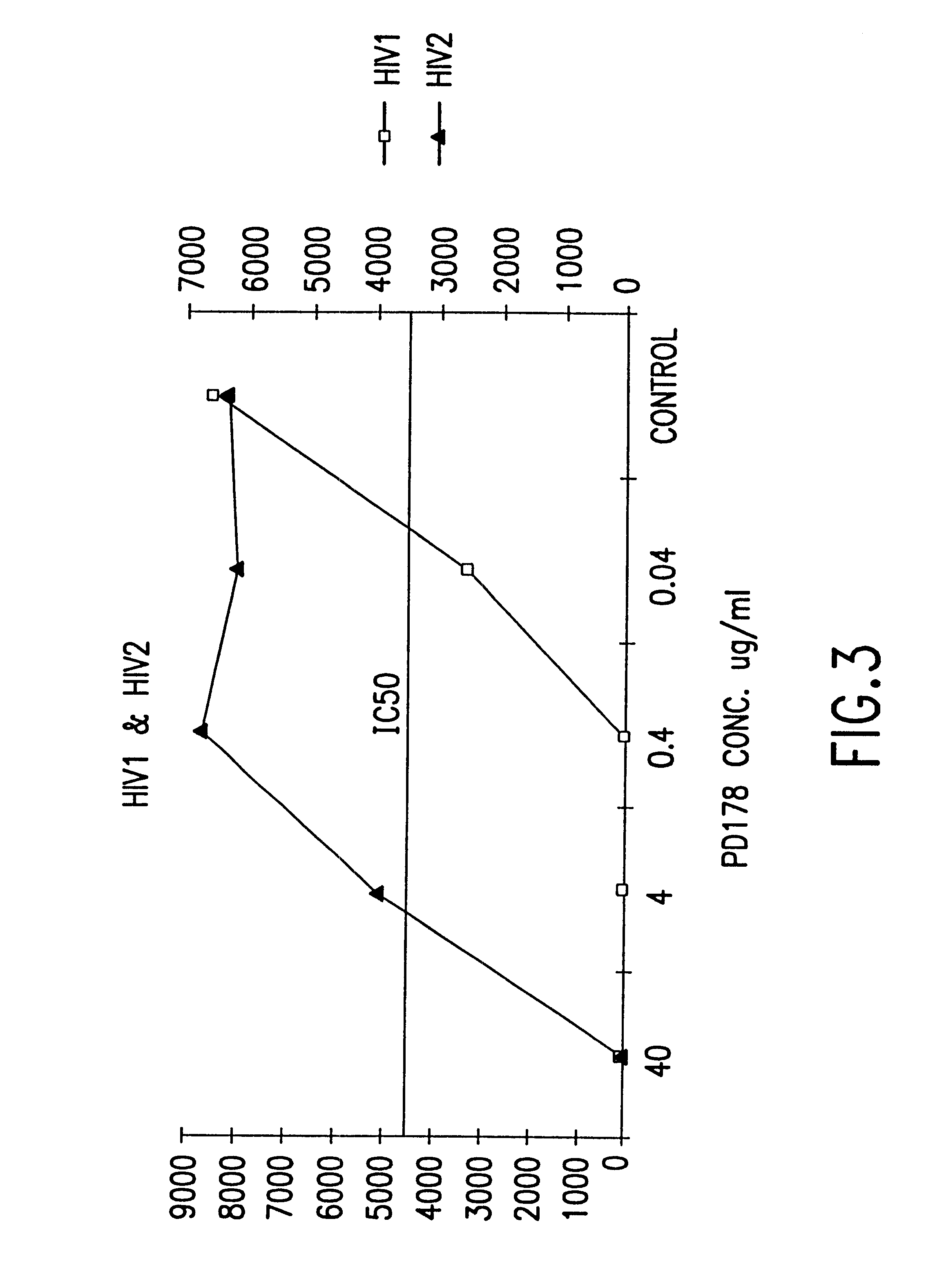Methods for the inhibition of respiratory syncytial virus transmission
a respiratory syncytial virus and virus technology, applied in the field of respiratory syncytial virus transmission inhibition, can solve the problems of large genetic heterogeneity within populations, neurological dysfunction, neoplastic growth, death, etc., and achieve the effect of potent anti-hiv-1 activity
- Summary
- Abstract
- Description
- Claims
- Application Information
AI Technical Summary
Problems solved by technology
Method used
Image
Examples
second embodiment
In such screening methods is a method for identifying a compound to be tested for antiviral ability comprising:
(a) exposing at least one compound to a peptide comprising a DP-178 peptide for a time sufficient to allow binding of the compound to the DP-178 peptide;
(b) removing non-bound compounds; and
(c) determining the presence of the compound bound to the DP-178 peptide, thereby identifying an agent to be tested for antiviral ability.
One method utilizing these types of approaches that may be pursued in the isolation of such DP-107-binding or DP-178-binding compounds is an assay which would include the attachment of either the DP-107 or the DP-178 peptide to a solid matrix, such as, for example, agarose or plastic beads, microtiter plate wells, petri dishes, or membranes composed of, for example, nylon or nitrocellulose. In such an assay system, either the DP-107 or DP-178 protein may be anchored onto a solid surface, and the compound, or test substance, which is not anchored, is la...
PUM
| Property | Measurement | Unit |
|---|---|---|
| concentrations | aaaaa | aaaaa |
| inhibitory concentration | aaaaa | aaaaa |
| volume | aaaaa | aaaaa |
Abstract
Description
Claims
Application Information
 Login to View More
Login to View More - R&D
- Intellectual Property
- Life Sciences
- Materials
- Tech Scout
- Unparalleled Data Quality
- Higher Quality Content
- 60% Fewer Hallucinations
Browse by: Latest US Patents, China's latest patents, Technical Efficacy Thesaurus, Application Domain, Technology Topic, Popular Technical Reports.
© 2025 PatSnap. All rights reserved.Legal|Privacy policy|Modern Slavery Act Transparency Statement|Sitemap|About US| Contact US: help@patsnap.com



